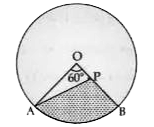An aritmetic progression consists of three terms whose sum is 15 and sum of the squares of extremes is 58. Find the terms of progression.Solution in Kannada
The correct Answer is:±2
Step by step video, text & image solution for An aritmetic progression consists of three terms whose sum is 15 and sum of the squares of extremes is 58. Find the terms of progression. by Maths experts to help you in doubts & scoring excellent marks in Class 10 exams.
Updated on:21/07/2023Topper's Solved these Questions
- ARITHMETIC PROGRESSIONSBook:OSWAAL PUBLICATIONChapter:ARITHMETIC PROGRESSIONSExercise:TEXTBOOK CORNER EXERCISE 1.1
Explore 4 Videos
- ARITHMETIC PROGRESSIONSBook:OSWAAL PUBLICATIONChapter:ARITHMETIC PROGRESSIONSExercise:TEXTBOOK CORNER EXERCISE 1.2
Explore 21 Videos
- ARITHMETIC PROGRESSIONSBook:OSWAAL PUBLICATIONChapter:ARITHMETIC PROGRESSIONSExercise:LONG ANSWER TYPE QUESTION-I
Explore 11 Videos
- AREAS RELATED TO CIRCLES Book:OSWAAL PUBLICATIONChapter:AREAS RELATED TO CIRCLES Exercise:LONG ANSWER TYPE QUESTIONS - I
Explore 20 Videos
- CIRCLES Book:OSWAAL PUBLICATIONChapter:CIRCLES Exercise:TEXTBOOK CORNER (EXERCISE 4.2)
Explore 13 Videos
Similar Questions
In which of the following situations, does the list of numbers involved form an arithmetic progression, and why?
(i)The taxi fare after each km when the fare is Rs 15 for the first km and Rs 8 for additional km.
(ii) The amount of air present in a cylinder when a vacuum pump removes (14)th of the air remaining in the cylinder at a time.
(iii) The cost of digging a well, after every metre of digging, when it costs 150 for the first metre and rises by 50 for each subsequent metre.
(iv) The amount of money in the account every year, when 10000 is deposited at compound interest at 8 % per annum.
View SolutionFill in the blanks in the following , given that a is the first term, d the common difference and an the nth term of the A.P.
View SolutionFind the sum of all natural numbers between 200 and 300 which are divisible by 6.
View SolutionIn the given figure, AOB is a sector of angle 60∘ of a circle with centre O and radius 17 cm . If AP ⊥ OB and AP = 15 cm find the area of the shaded region.

View SolutionFrom a point Q ,the length of the tangent to a circle is 24 cm and the distacne to Q from the centre is 24.5 cm.The radius of the circle is
(a) 4.92 cm
(b)12 cm
©15 cm
(d)24.5 cm
View SolutionAn aritmetic progression consists of five terms whose sum is 15 and sum of the squares of the extremes is 58. Find the terms of progression.
View SolutionThe sum of the terms of an infinite geometric progression is 3 and the sum of the squares of the terms is 81. Find the first term of the series.
View SolutionThe sum of the fourth and twelfth term of an arithmetic progression is 20. What is the sum of the first 15 terms of the arithmetic progression?
View SolutionIn a geometric progression consisting of positive terms each term equals the sum of the next two terms. Then the common ratio of this progression equals
View SolutionThe sum o the fourth and eighth terms of arithmetic progression is 24 and the sum of the sixth and tenth terms is 44. Find the first three terms of the Arithmetic progression:
View SolutionIn a geometric progression, the sum of first three terms is 35 and the sum of squares of the first three terms is 525. The second term of the geometric progression is
View SolutionThe sum of the first three terms of an arithmetic progression is 9 and the sum of their squares is 35. The sum of the first n terms of the series can be
View SolutionIn a geometric progression consisting of positive terms, each term equals the sum of the next two terms. Then the common ratio of this progression equals :
View Solutionকোনো অসীম গুণোত্তর প্রগতির সমষ্টি 15 এবং পদ সমূহের বর্গের সমষ্টি 45। প্রগতি টি নির্ণয় করো।
View SolutionFind three consecutive terms in an arithmetic progression whose sum is 18 and sum of their square is 140.
View Solution